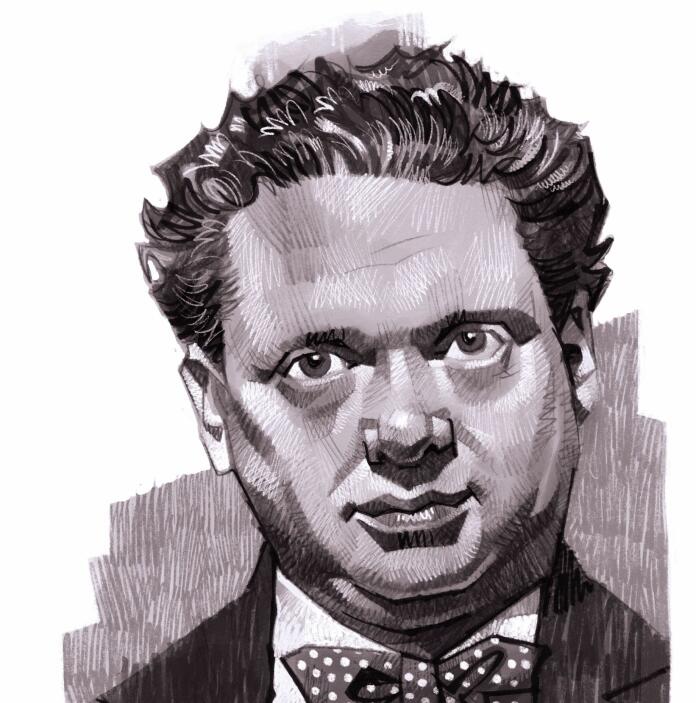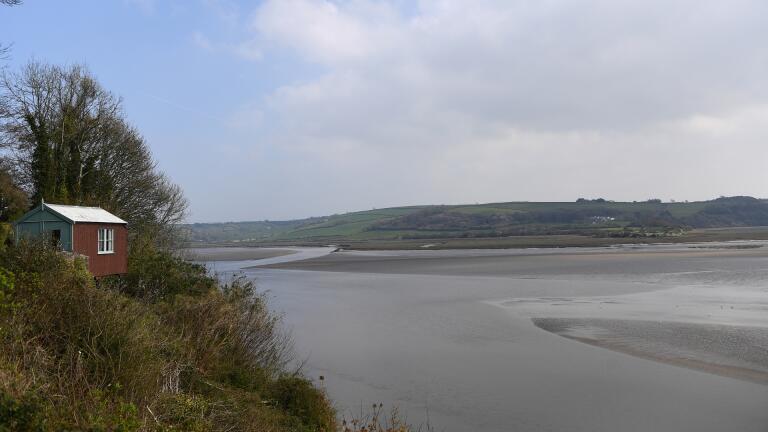It’s tempting to say that Dylan Marlais Thomas (27 October 1914–9 November 1953) is becoming Wales’s Shakespeare. His enduring – and expanding – fame is due to his unique mastery of words: unique because of the way in which his English-language poems and prose were infused by the melodies and lyricism, rhythms and cadences, of the Welsh language.

Dylan Thomas: the poetic voice of Wales
Wales’s best-known 20th-century writer enjoys fame that extends far beyond his native country. Even during his lifetime, he was a star in America, his public readings winning him great acclaim. His distinctive voice with its Welsh lilt became almost as famous as his literary work.
His best-known work, Under Milk Wood, is a magical ‘play for voices’ based at the fictitious sea-town of Llareggub (spell it backwards to get the joke). Poems like Do Not Go Gentle into that Good Night, written for his dying father, and Poem in October, written on his 30th birthday, are also lauded as being amongst his finest works.
Early days
The story of his tempestuous life has also captured the imagination, inspiring books, essays and even Hollywood films. Thomas was born in 5 Cwmdonkin Drive in the ‘ugly, lovely town’ of Swansea, overlooking the Swansea Bay shore.
Thomas was brought up to speak only English, despite the fact that his parents were both bilingual. He did not stand out academically at school but showed early talent as a poet. Of the 90 poems he published. almost half were written in his early years between 1930 and 1934, when he lived at Cwmdonkin Drive.
London calling
By the mid-1930s he had caught the attention of some of the most celebrated poets of the day, including TS Eliot, and London’s literati. Thomas was now spending much of his time in London and frequenting bars in the West End, where he met the young Irish dancer, Caitlin Macnamara, who became his wife.
It was a fiery relationship. Constant money worries and didn’t help, though the couple found solace when they escaped to Laugharne, where Thomas famously ‘got off the bus and forgot to get on again’.
The final years
Thomas’s final collection of poems, published when he was 38, won him the Foyle poetry prize. In the early 1950s, he embarked on lucrative tours of the USA. By now, his health was clearly suffering, with increasingly frequent and serious bouts of gout and lung problems.
In May 1953, Thomas performed a work-in-progress version of Under Milk Wood. In October, he flew to America for a performance of the work. It was a fateful visit. Already suffering from blackouts and heart problems, he became increasingly unwell. Controversy and conjecture surround the precise medical reason for his death, though heavy drinking may have played a part.
His body was brought back to Wales, and he was buried in the churchyard at Laugharne on 25 November. His widow Caitlin died in 1994 and was buried alongside him.
In 1982 a plaque in memory of Dylan Thomas was unveiled in Poets’ Corner in Westminster Abbey.
Dylan Thomas: a lasting influence
As evidenced by his Taylor Swift name-checking, the life and work of Dylan Thomas continue to fascinate and inspire creatively years after his death. Hollywood superstar Johnny Depp visited 5 Cwmdonkin Drive (the birthplace of Dylan Thomas) and described himself as being 'dumbfounded' by the experience.
Find out more about Dylan Thomas today
Read Dylan's work, and you are immediately transported to the tiny, timeless sea town of Laugharne where Thomas was at his happiest, or to the green, rolling farmlands of Carmarthenshire brought to life in the poem Fern Hill.
There are, of course, many places rich in Dylan Thomas associations. Take a tour of Laugharne and visit his Boathouse, now an evocative little museum dedicated to Thomas’s life and work. Walk the local trails, then visit New Quay which, along with Laugharne, inspired Under Milk Wood. Swansea and Gower also pay homage to their most famous son. There are more walking trails to follow, and you can call into the Dylan Thomas Centre on the waterfront as well as his childhood home in Cwmdonkin Drive.




